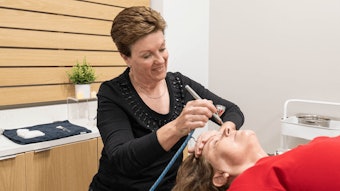In today’s highly competitive business climate, most successful skin care facilities are finding new and creative ways to win business. By building customer-centric business plans and increasing commitment to company-wide execution, they’ve managed to succeed in a turbulent economy. Most of all, these facilities have discovered they simply cannot afford to make mistakes in their customer relationships. They strive to “out-execute” the competition in every aspect of their business that touches the customer. These organizations understand that the key to creating loyal clients is building a culture of accountability.
Skin care facilities that foster accountability run like well-oiled machines, as people and processes work in lockstep to achieve more predictable and profitable results. Positive accountability is combined with high levels of employee satisfaction, because individuals are enabled with the right resources and management support. There are three keys to creating a culture of customer accountability: exceptional leaders, process discipline and workforce engagement.
Setting a direction
Establishing a customer-accountable culture starts with developing exceptional leaders. These leaders have a foundation of management expertise that can maximize the talents of their teams as they keep them focused on their clients. Six job functions that are critical for exceptional leaders: communicating, planning, organizing, controlling, staffing and leading. Leaders who are effective at these functions consistently elevate the performance of their people. When market conditions are constantly in flux, leaders must be exceptional. They must find new and better ways to improve performance.
Doing things right
Process discipline is the fuel that accelerates client accountability. This typically involves a regular, top-down examination of goals and tasks, enabled by a plan for overcoming obstacles to success. But a consistent methodology is not enough if there is not a clear understanding of the importance of clients to accomplishing key business drivers. Identifying and planning to execute on these is the key to energizing employee commitment to individual goals, as well as those of the skin care facility.
In years past, many spas have been able to succeed because of great services, products and people. When markets get tough, accomplishing the same results requires more. Process discipline drives accountability and ensures success even in a turbulent economy.
People make it happen
Leaders who support employee development and clearly communicate goals enable workforce engagement. For many skin care facilities, it’s the engine that drives accountability. When individuals believe leadership is aligned with their efforts to serve clients and understand the role they play in achieving the company’s goals, they tend to maintain their client-needs focus. Engaged team members view each client experience as a moment of truth—an opportunity to deliver value and create another loyal client.
Ultimately, workforce engagement enables commitment to excellence. When individuals understand how their dedication plays into the organization’s broader goals, they see themselves as part of a team, and work to better themselves to ensure the whole team wins. What’s most interesting is how an environment of engaged employees can thrive, not only because it’s a great place to work, but also because it creates a vibrant, productive culture that delivers predictable and profitable results.
A competitive advantage
Skin care facilities with an uncompromising commitment to leadership, process and people, by extension, are committed to their clients. Accountability makes customer loyalty possible.
Walt Zeglinski is CEO and chief client advocate for Management Action Programs (MAP), a performance-improvement firm that helps organizations achieve profitable growth. Zeglinksi has more than 20 years of successful experience in the corporate performance industry, with expertise in developing and implementing practical solutions for complex business challenges. He has worked with executive teams throughout many industries.










